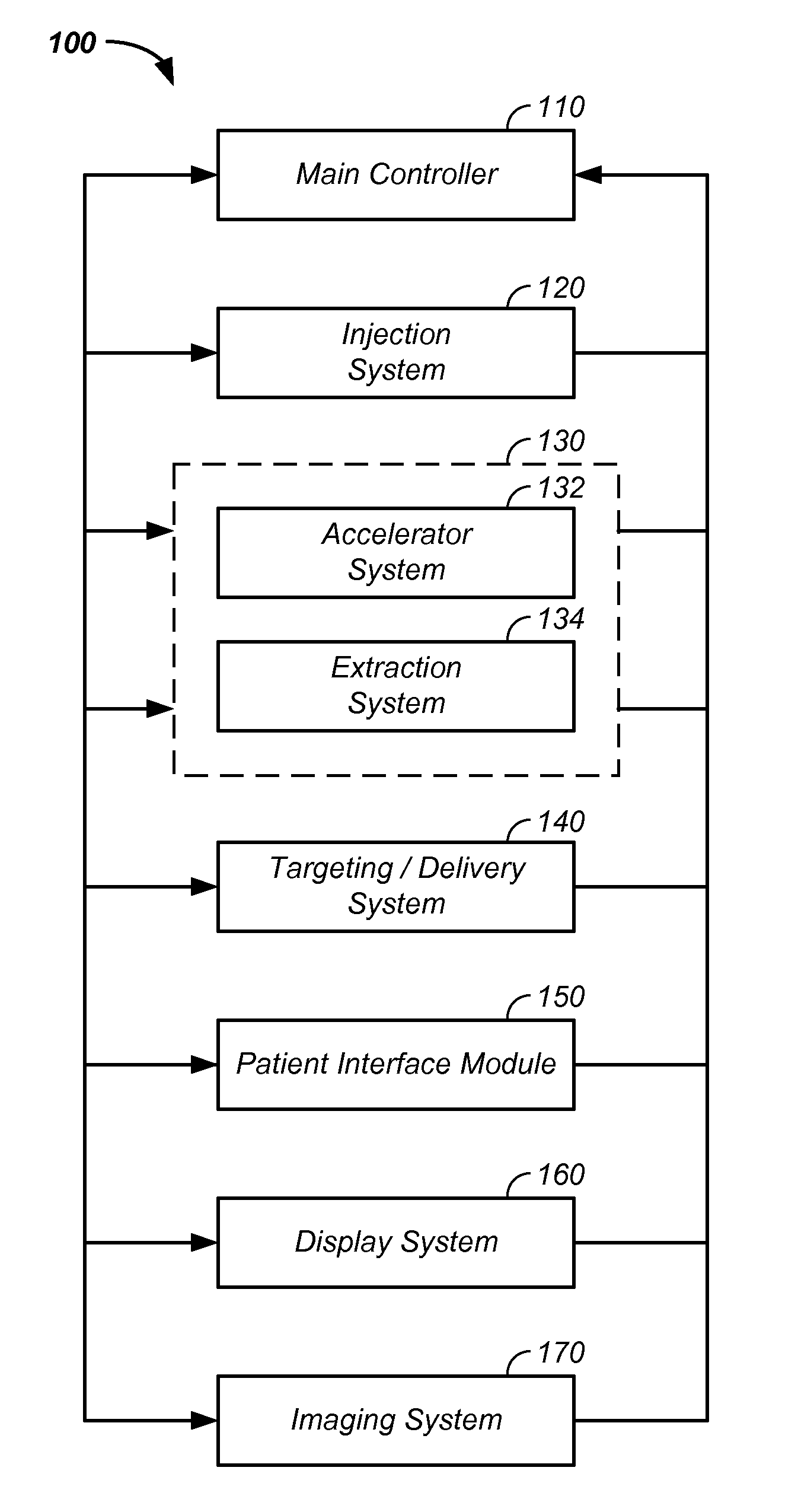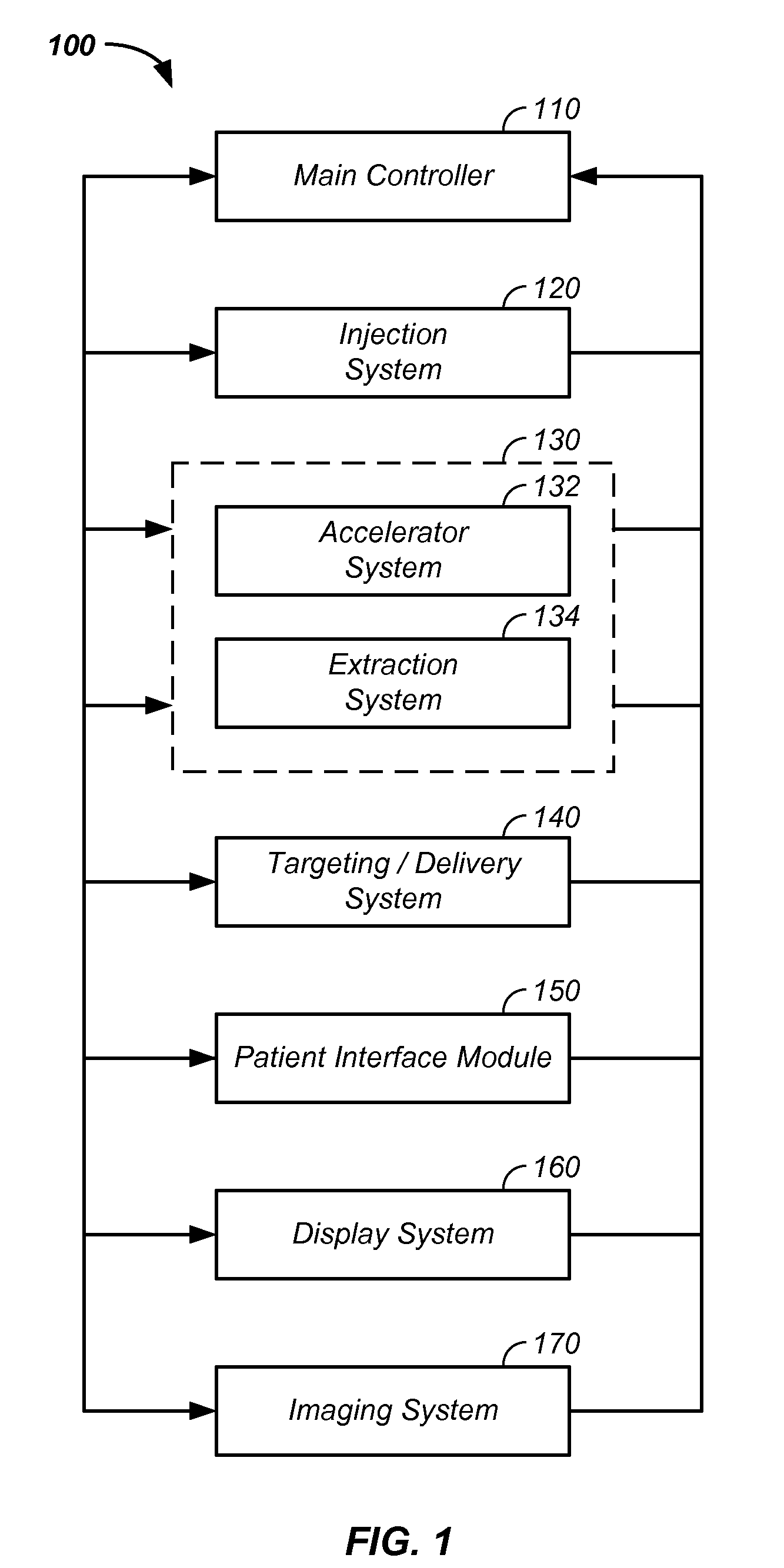Tandem accelerator method and apparatus used in conjunction with a charged particle cancer therapy system
a technology of charged particle and accelerator, applied in the direction of beam deviation/focusing, therapy, instruments, etc., can solve the problems of reducing the ability to repair damaged dna, and affecting the treatment effect of solid cancer,
- Summary
- Abstract
- Description
- Claims
- Application Information
AI Technical Summary
Benefits of technology
Problems solved by technology
Method used
Image
Examples
example i
[0140]In one example, the initial cross-section distance 1410 is about fifteen centimeters and the final cross-section distance 1420 is about ten centimeters. Using the provided numbers, the concentration of the magnetic field is about 15 / 10 or 1.5 times at the incident surface 1270 of the gap 1110, though the relationship is not linear. The taper 1460 has a slope, such as about 20, 40, or 60 degrees. The concentration of the magnetic field, such as by 1.5 times, leads to a corresponding decrease in power consumption requirements to the magnets.
[0141]Referring now to FIG. 15, an additional example of geometry of the magnet used to concentrate the magnetic field is illustrated. As illustrated in FIG. 14, the first magnet 1210 preferably contains an initial cross-sectional distance 1410 of the iron based core. The contours of the magnetic field are shaped by the magnets 1210, 1220 and the yokes 1212, 1222. In this example, the core tapers to a second cross-sectional distance 1420 with...
example ii
[0145]Referring now to FIG. 17, an example is used to clarify the magnetic field control using a feedback loop 1700 to change delivery times and / or periods of proton pulse delivery. In one case, a respiratory sensor 1710 senses the respiration cycle of the subject. The respiratory sensor sends the information to an algorithm in a magnetic field controller 1720, typically via the patient interface module 150 and / or via the main controller 110 or a subcomponent thereof. The algorithm predicts and / or measures when the subject is at a particular point in the respiration or breathing cycle, such as at the bottom of a breath. Magnetic field sensors 1730 are used as input to the magnetic field controller, which controls a magnet power supply 1740 for a given magnetic field 1750, such as within a first turning magnet 1010 of a synchrotron 130. The control feedback loop is thus used to dial the synchrotron to a selected energy level and deliver protons with the desired energy at a selected p...
example iii
[0147]Referring again to FIG. 16, an example of a winding coil 1630 that covers four turning magnets 1010, 1020 is provided. Optionally, a first winding coil 1640 covers two magnets and a second winding coil covers another two magnets. As described, supra, this system reduces space between turning section allowing more magnetic field to be applied per radian of turn. A first correction coil 1610 is illustrated that is used to correct the magnetic field for the first turning magnet 1010. A second correction coil 1620 is illustrated that is used to correct the magnetic field for a winding coil 1630 about two turning magnets. Individual correction coils for each turning magnet are preferred and individual correction coils yield the most precise and / or accurate magnetic field in each turning section. Particularly, the individual correction coil 1610 is used to compensate for imperfections in the individual magnet of a given turning section. Hence, with a series of magnetic field sensors...
PUM
 Login to View More
Login to View More Abstract
Description
Claims
Application Information
 Login to View More
Login to View More - R&D
- Intellectual Property
- Life Sciences
- Materials
- Tech Scout
- Unparalleled Data Quality
- Higher Quality Content
- 60% Fewer Hallucinations
Browse by: Latest US Patents, China's latest patents, Technical Efficacy Thesaurus, Application Domain, Technology Topic, Popular Technical Reports.
© 2025 PatSnap. All rights reserved.Legal|Privacy policy|Modern Slavery Act Transparency Statement|Sitemap|About US| Contact US: help@patsnap.com



